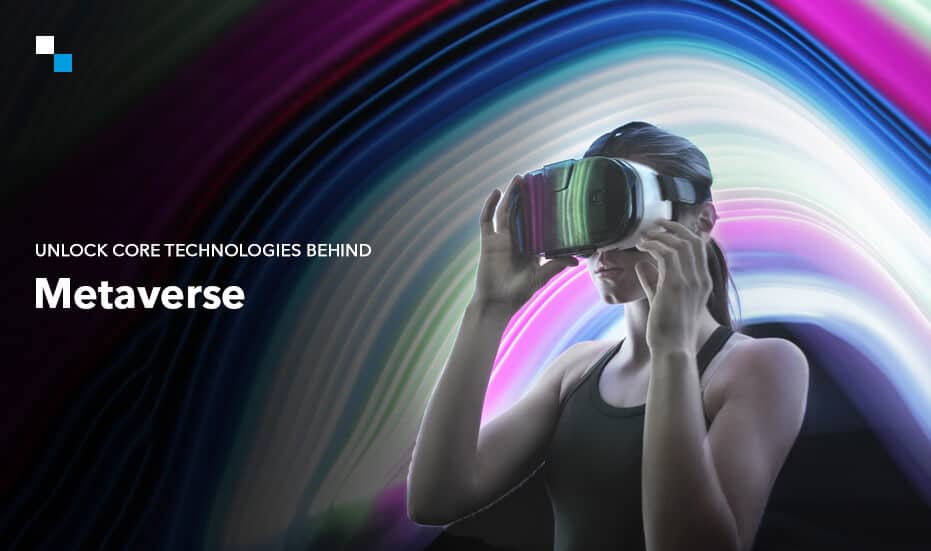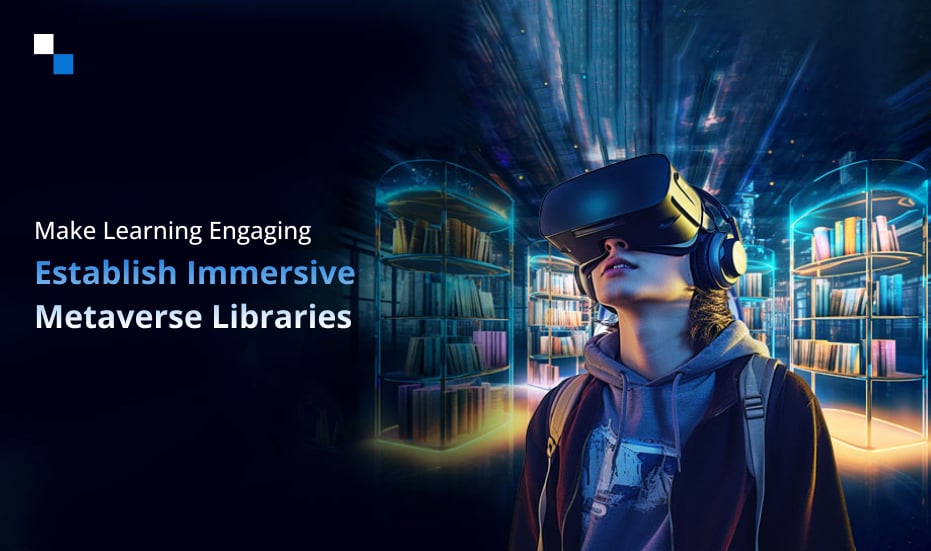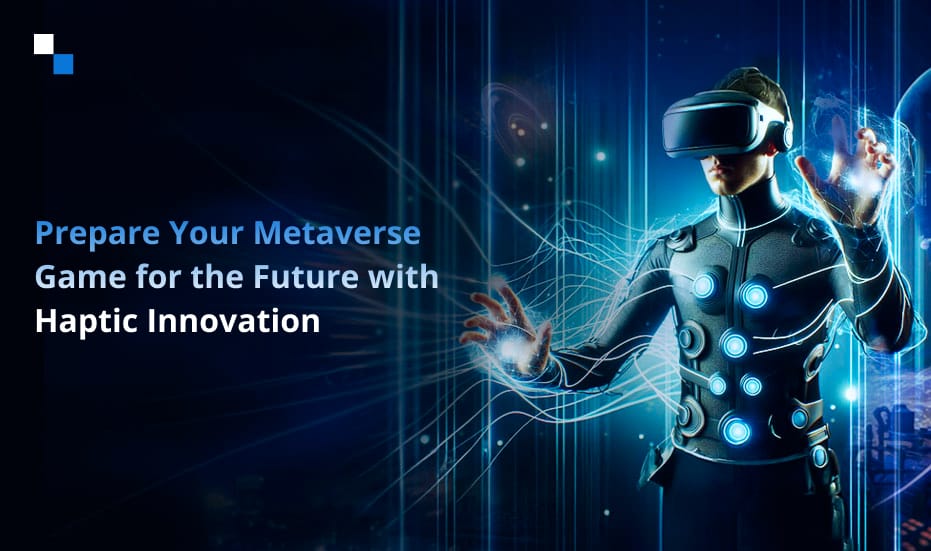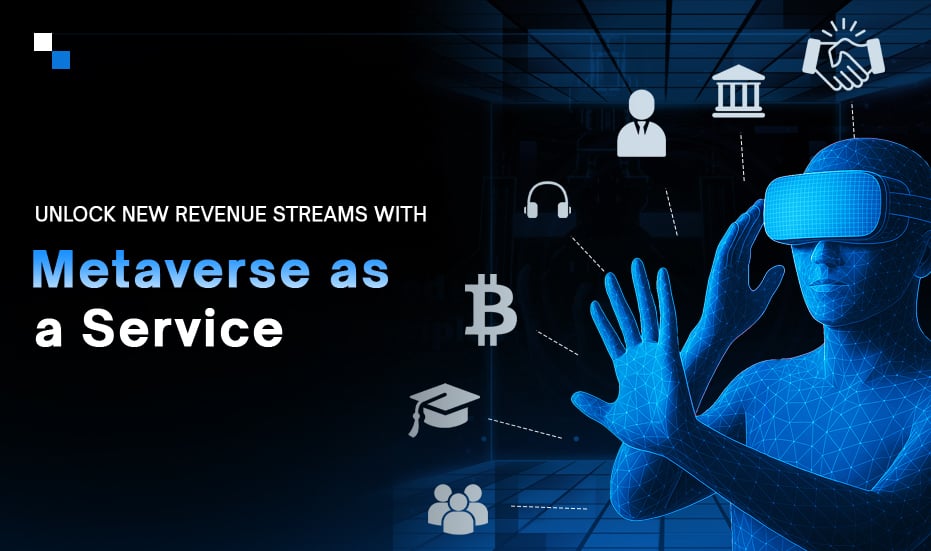
Create your own Rummy Game
August 5, 2024
Building Leverage and Margin Trading Exchange: Your 2024 Blueprint
August 5, 2024While often depicted as the “Futuristic Fantasy”, Metaverse is as real as the Internet- connecting people in a new 3D world. Backed by many powerful technologies, the Metaverse Development Services create a highly immersive virtual environment that allows users to explore possibilities on different tangents, enabling interactive digital experiences through the internet’s next iteration.
Metaverse is not just the comfort, it’s the decent technology that enables people to get rid of long distances and come together in real time. However, not all of us are aware of its origin and development.
This guide explores the core technologies behind the functioning of Metaverse.
Decoding Metaverse: A World Where Imagination and Reality Interact
Before diving into the core technologies behind the Metaverse, it’s important to understand what the Metaverse is. The term “Metaverse” was coined in 1992 and is a fusion of two words: “Meta,” meaning beyond, and “Verse,” short for the universe.
At its core, the Metaverse is all about 3D interactivity within a digital environment. In this virtual world, users navigate and interact through 3D avatars, allowing them to engage in multiple activities.
Whether it is about socializing, attending virtual meetings, shopping, or building social networks, the Metaverse offers a dynamic and immersive experience.
Jon Radoff’s Seven Layers of the Metaverse
The proposed Metaverse model by Jon Radoff explores how the technology works. Comprises of 7 layers, Jon Radoff’s model represents crucial aspects of the metaverse:
Layer 1: Experience
This layer highlights the interactions between users within Metaverse. Encompassing 2D and 3D experiences, it aims to offer intuitive and interactive environments that dematerialize the physical constraints for limitless possibilities.
Layer 2: Discovery
This layer focuses on the mechanism enabling users to engage in virtual activities. The layer is further categorized into Inbound Discovery (for users to actively seek information) and Outbound Discovery (for sharing the information with users). Community-driven content and real-time presence are crucial components, enhancing how users learn about and interact with metaverse offerings.
Layer 3: Creator Economy
This layer focuses on the tools and platforms empowering users to create and monetize the content without learning core programming skills. This layer contributes to providing frameworks enabling creators to indulge in content creation activities, fostering a vibrant ecosystem where they can grow with their consumers.
Layer 4: Spatial Computing
This layer combines the physical and digital experiences through Augmented reality and Virtual Reality. Responsible for facilitating interactions that combine real-world elements with virtual enhancements, exemplified by applications like Microsoft’s HoloLens and more.
Layer 5: Decentralization
This layer focuses on distributing the ownership and power within the Metaverse. Blockchain technology allows users to buy, create, and own virtual assets, and participate in peer-to-peer transactions, ensuring that creators have complete control over the data and work.
Layer 6: Human Interface
This layer primarily focuses on addressing the user interactions within Metaverse through technologies that enable intuitive engagements within virtual environments. It uses AR to provide contextual information regarding the physical world, enhancing user experience with digital content integration.
Layer 7: Infrastructure
Infrastructure is the foundational layer encompassing the technological bone crucial for Metaverse functions. This involves internet connectivity ( 5G, 6G) and cloud computing. The infrastructure layer supports the other layers and ensures that Metaverse efficiently operates and scales with time.

Core Technologies Powering Metaverse
People think the core technologies behind Metaverse Development Solutions are just Augmented and Virtual Reality. Metaverse is not entirely built on these. Technologies like 3D Modeling, Edge Computing, the Internet Of Things, and Blockchain make virtual experiences more immersive and interactive. The core technological foundations behind the metaverse are listed below:
1. Extended Reality (XR)
Extended Reality is fundamental to Metaverse development services. It encompasses Augmented and Virtual Realities enhancing user interaction and immersion within Metaverse space.
Key Features of XR in the Metaverse:
- Enhanced Immersion: XR enables interactive engagement of users within virtual environments realistically, promoting deeper connections and interactions.
- Spatial Computing: It enables the metaverse to comprehend and react to real-world surroundings for communication.
- Social Interactions: XR creates a sense of presence to users that feels real like they are sharing a physical space with others.
- Digital Assets and Environments: XR supports the asset creation and trading for users to have seamless interaction with virtual objects and spaces.
- Training and Simulations: XR helps businesses to provide realistic training learning and simulations.
Technology Stack for XR Development:
- Programming Languages: C#, C++, Java, Swift, JavaScript
- XR Engines: Unity 3D, Unreal Engine
- XR Hardware: Oculus Rift, Valve Index, Microsoft HoloLens, HTC Vive.
- AR Development Kits: ARCore, ARKit.
2. Artificial Intelligence (AI)
AI is crucial to enhance user experience within the metaverse through various applications.
Key Applications of AI:
- Realistic NPCs: AI-driven non-playable characters (NPCs) enhance immersion by exhibiting human-like behaviors and responses.
- Behavior Prediction and Personalization: AI algorithms help to analyze user interactions which contributes to customizing content, experiences, and environments to their preferences.
- Content Creation and Generation: Generative algorithms contribute to creating virtual landscapes and narratives for streamlined developments.
- Natural Language Processing (NLP): AI facilitates communication within the metaverse through NPL for natural interactions between virtual objects and users.
AI Technologies and Tools:
- Frameworks: TensorFlow, Keras, PyTorch.
- NLP Models: BERT, T5, GPT.
- Computer Vision Models: Mask R-CNN, YOLO.
3. 3D Modeling and Reconstruction
3D modeling contributes to creating visually appealing and interactive metaverse environments
Key Aspects of 3D Modeling:
- Avatar and Object Design: User representation within Metaverse through Customizable avatars and detailed objects.
- User-Generated Content: 3D modeling provides open-source tools for creating and sharing content.
Tools for 3D Modeling:
- 3D Software: 3ds Max, Blender, Autodesk Maya.
- 3D Scanning: Agisoft Metashape, RealityCapture.
- Animation Tools: Unity’s Animation Rigging Package, Mixamo.
4. Digital Twins
The real-world entities are represented in Metaverse using Digital twins for predictive analytics and simulations.
Applications of Digital Twins in the Metaverse:
- Virtual Real Estate: Digital replicas of properties for users to explore and interact.
- Smart Cities: Simulates neighborhoods to analyze potential changes and impacts.
- Maintenance and Monitoring: Digital twins help businesses with real-time monitoring and predictive maintenance.
Technology Stack for Digital Twins:
- Platforms: AWS IoT Things Graph, Microsoft Azure Digital Twins.
- Simulation Tools: SIMUL8, AnyLogic.
- Geospatial Integration: Mapbox, Esri ArcGIS.
5. Blockchain Technology
Blockchain underpins the economic structure of the metaverse, enabling decentralization and true ownership of digital assets.
Key Features of Blockchain in the Metaverse:
- Decentralization: Reduces reliance on central authorities, empowering users with control over their assets and identities.
- Digital Asset Ownership: NFTs allow users to own verifiable digital assets, creating new economic opportunities.
- Virtual Economy: Cryptocurrencies are used for virtual transactions and incentivized participation.
- Interoperability: Users can transfer assets across different platforms, enhancing the interconnectedness of experiences.
Blockchain Tech Stack:
- Platforms: Ethereum, Polkadot, Binance Smart Chain
- Smart Contracts: Solidity, Rust
- Token Standards: ERC-20, ERC-721, BEP-20

6. Cloud Computing
Cloud computing provides the required infrastructure to support big data and complex applications. It enables scalable resources, real-time collaboration, and remote access to virtual environments.
Key Features of Cloud Computing in the Metaverse:
- Scalability: Cloud services enable metaverse platforms to handle varying user loads without compromising performance with dynamic allocation of resources according to the demand.
- Accessibility: Metaverse applications are accessible from any location contributing to mass participation and engagement.
- Real-time Collaboration: Cloud computing offers simultaneous user interactions for shared experiences in virtual worlds.
- Data Storage and Management: The cloud provides a robust solution for data storage and management generated within the metaverse.
Technology Stack for Cloud Computing:
- Cloud Service Providers: Amazon Web Services, Google Cloud Platform, Microsoft Azure.
- Containerization and Orchestration: Kubernetes, Docker.
- Database Solutions: MongoDB, Firebase, PostgreSQL.
- Content Delivery Networks: Cloudflare, Akamai
7. Internet of Things
IoT connects enable to connect devices to the internet for sharing and gathering data. IoT enhances interactivity in Metaverse and provides real-time data integration.
Key Applications of IoT in the Metaverse:
- Real-World Data Integration: IoT devices can feed real-time data into the metaverse to respond to changes in the physical world.
- Smart Environments: USmart devices enable users to interact within the metaverse, reflecting real-world scenarios.
- Enhanced User Interaction: Users can control physical devices using virtual interfaces.
- Data-Driven Insights: IoT devices can collect data to analyze and enhance user experiences and optimize environments.
Technology Stack for IoT:
- IoT Platforms: AWS IoT, Microsoft Azure IoT Hub, Google Cloud IoT.
- Communication Protocols: MQTT, HTTP/HTTPS, CoAP.
- Data Processing: Apache Spark, Apache Kafka.
- Device Management: Particle, ThingSpeak.
8. 5G Technology
5G technology offers high-speed and low-latency connectivity for user interaction within Metaverse.
Key Benefits of 5G in the Metaverse:
- Low Latency: 5G contributes to reduced latency within the virtual world for real-time interactions and responsiveness.
- High Bandwidth: The increased bandwidth of 5G enables fast transmission of big data sets, supporting high-quality graphics and complex simulations.
- Enhanced Mobile Experiences: 5G broadens virtual environment access by enabling users to engage with the metaverse on mobile devices without sacrificing performance.
- Network Slicing: 5G enables network customization for specific applications for optimal performance.
Technology Stack for 5G:
- 5G Network Providers: Verizon, AT&T, T-Mobile
- Edge Computing Solutions: Microsoft Azure Edge Zones, AWS Wavelength.
- Network Management Tools: OpenStack, Kubernetes
- Device Compatibility: 5G-enabled smartphones, AR/VR headsets.
The End Note
While the technologies behind Metaverse Development Solutions are still evolving at an accelerated rate, understanding these technologies is crucial to unlocking their maximum potential. This guide highlights the major players supporting Metaverse technology, which enables immersive and interactive experiences within the virtual world. The layers that build the Metaverse illustrate how these technologies work together to create an immersive virtual environment.

Need Help To Make Metaverse Development Solutions Tech Choices?
At Antier, we understand that navigating the metaverse can be daunting. That’s why our team of experts is dedicated to helping you identify the ideal tools and technologies that will elevate your project above the competition.
We are a pioneering metaverse application development company that can help you build immersive virtual environments, develop interactive applications, or launch robust NFT marketplaces that captivate your audience.
Don’t let uncertainty hold you back! Transform your vision into a compelling reality with our technical expertise and customized solutions!



